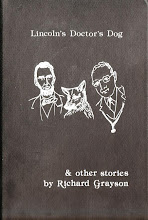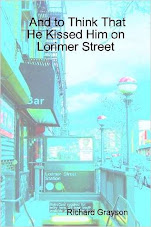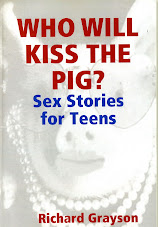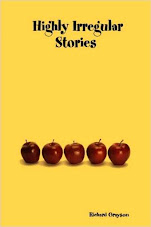
We went to the Strand Bookstore on Thursday at 7 p.m. after hanging out in Union Square Park following dinner on a perfect warm and clear evening. Sean Wilentz, the distinguished historian, Princeton professor, Democratic party eminence grise and Bob Dylan scholar spoke about his latest book, The Age of Reagan: A History, 1974-2008.
What’s always remarkable about Prof. Wilentz when we see him is how we can still detect so much of the brilliant kid who sat across from us in homeroom at Midwood High School forty years ago and beyond. His hair is now grayer than it was blond, but he’s still got the same hairline he did at 17! Sean – we called him Robert back in the Johnson administration – was not only one of the smartest students in our school but also an incredibly nice guy. No wonder our friend, a certain literary agent also in our graduating class, used to make us listen to how she had a big crush on him.
Probably the last times we saw him were in the mid-1970s to mid-1980s, when we used to catch him and his sister Amy Wilentz (who's also produced some amazing nonfiction books) a few blocks south in Greenwich Village, at their family-owned E.S. Wilentz’s Eighth Street Bookshop, our favorite bookstore of all time in New York (and the only one besides Gotham Book Mart to carry our little chapbook, Disjointed Fictions, back when it came out thirty summers ago in 1978). Since then he’s produced one incredibly good book after another, combining rigorous scholarship with a terrific style that makes him a pleasure to read; he deservedly won the Bancroft Prize for his magisterial The Rise of American Democracy

Sean’s current book title, to those of us of a certain age, recalls first of all Arthur Schlesinger’s The Age of Jackson, and while we haven’t finished it yet, it probably sums up our age, at least as far as public policy and the national mood are concerned.
Why is Ronald Reagan the defining political figure of our times? Why has the conservative ascendancy lasted far longer than any previous period of conservative or liberal political dominance? How did Reagan manage to change the dynamic of political discourse and move the country to the right for so long that only now is his era fading away?
In a forty-minute fascinating talk, interspersed with brief readings from the book – among them Jerry Ford’s musing on the bicentennial even as Reagan almost defeated him for the Republican nomination in 1976 and a telling moment from Reagan’s second term, prefiguring the Iran/Contra fiasco, when he insisted on paying tribute to fallen Nazi soldiers at Bitburg – Prof. Wilentz laid out the argument of his book.
Probably we can’t do his thesis much justice here – read the book for yourself, and you can start with reviews like this one -- but Sean worked a lot like a fiction writer, telling a fascinating narrative with all kinds of compelling characters, like the young White House chief of staff with the very strange views he discovered in letters and documents in the Richard B. Cheney papers at the Gerald Ford Presidential Library. (“Being a historian means you get to read a lot of dead people’s letters,” said Sean, “but for this book I got to read some living people’s letters.”) Did you know that Cheney and Rumsfeld back in the 1970s tried to get Robert Bork installed as CIA director? (The job ultimately went to George H.W. Bush.) Sean Wilentz’s book is filled with interesting details like that, along with an analysis of how Reagan first transformed himself from a sunny, surprisingly sophisticated performer who worshipped FDR into the star and the firmament of the American conservative movement, starting with the little part that made Reagan Reagan, his 1964 speech on behalf of Goldwater, “A Time for Choosing.”

Maybe it takes a liberal Democrat like Wilentz – to fairly appraise Reagan’s presidency amid a passel of Reagan books that are either hagiography or demonic portraits.
Sean spent a long time taking maybe twenty questions, including his recent opinions on the “insanity” of the Democratic nomination rules (OK, we were there in Miami Beach at the 1972 convention when everything started to change). Tina Brown, sitting in the first row with Harold Evans, asked an interesting question wondering how Reagan managed to reconcile his buoyant man-of-the-world Hollywood temperament with his very right-wing, rather callous political worldview. Sean said, “He was the first Reagan Democrat, a little ahead of his time.”
Reagan’s age is over, our historian tells us, even if McCain wins the Presidency. But we’ll never get back to a 70% top income tax rate, and so parts of Reagan’s legacy aren’t going to go away for quite some time to come.
Sean Wilentz is a graceful stylist whose books are not the usual dry fare of the academic historian. But, hey, he’s from Brooklyn before most of today’s Brooklyn writers were born. Even people who hated Ronald Reagan will enjoy The Age of Reagan.









































